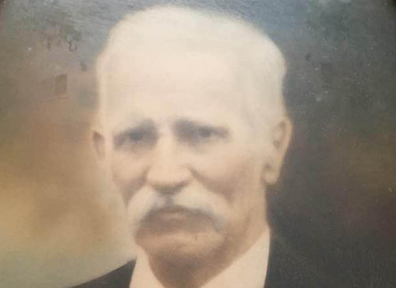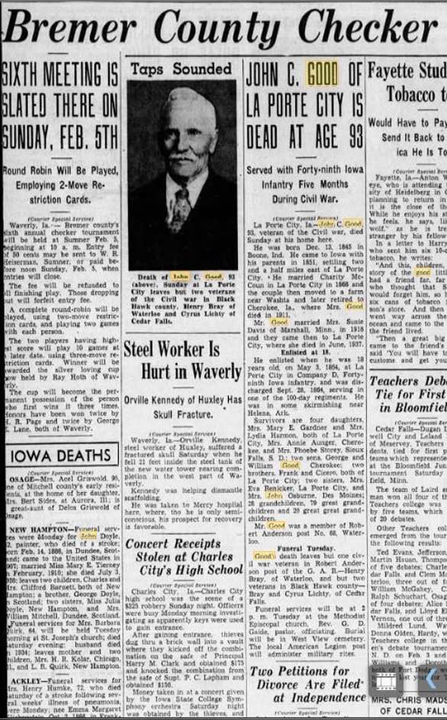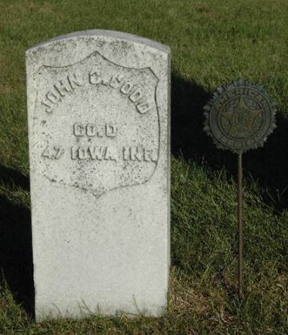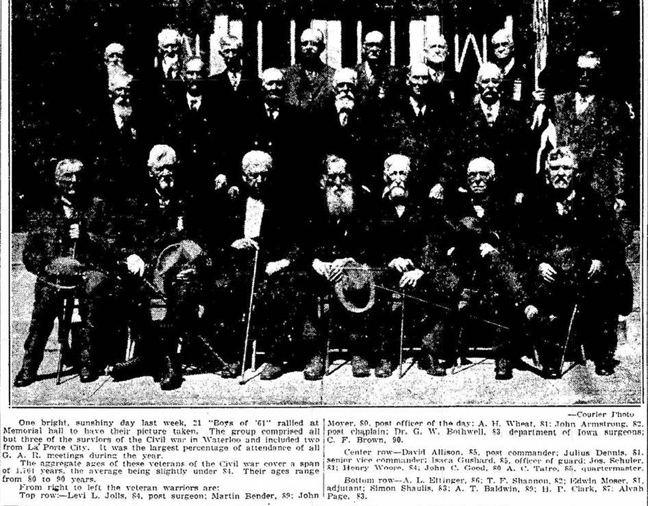One 'Good' soldier part of Iowa's Civil War service
Posted
by Pat Kinney
on Monday, March 1, 2021
This year is the 175th anniversary of Iowa's statehood. It is also the 160th anniversary of the start of the American Civil War.
The comparatively young state paid a comparatively high price in that war.
By the end of the war in 1865, 76,534 Iowa men had served in the Union Army - 11 percent of the state's entire population at that time - 674,913. Iowa supplied 48 regiments of infantry, 4 regiments of artillery and one full regiment of Black soldiers, who became part of the U.S. Colored Troops.
According to Wikipedia, "Though the total number of Iowans who served in the military during the Civil War seems small compared to the more heavily populated eastern and southern states, no other state, North or South, had a higher percentage of its male population between the ages of 15 and 40 serve in the military during the course of the war."
Of all those soldiers, 13,169 died --almost a fifth of them. Two thirds died from disease, the rest from combat. A number died as prisoners of war including some at the infamous prison camp at Andersonville, Ga., where one third of the 45,000 POWs there died in captivity.
Iowa's Union soldiers served mainly in the western part of the Confederacy, in states such as Mississippi, Tennessee and Arkansas, and the border state of Missouri.
One of those soldiers was my great-great grandfather, John Cyrus Good of La Porte City.
He served five months in the Union Army in 1864, in Company D of the 47th Iowa Infantry, in skirmishes with Confederate troops at Helena, Ark. He was 18 at the time.

John Cyrus Good
The 47th Iowa was a so-called “100-day regiment” that performed garrison duty in eastern Arkansas and freed up more seasoned Union troops to join Gen. William Tecumseh Sherman’s March to the Sea in Georgia.
According to a Courier article, John Cyrus Good was born in Boone, Indiana and came to Iowa as a boy with his parents in 1851. They settled east of La Porte City. He married after the war and farmed near Washta in Cherokee County in Northwest Iowa. He was widowed, remarried and moved back to La Porte City, surviving his second wife.
He died at age 93 in 1939, one of the last three living Civil War veterans in Black Hawk County prior to his death. One of his adult surviving children was Mary Gardner, my great grandmother. He’s laid to rest at Union Cemetery in Washta.

1939 Waterloo Courier article on the passing of Civil War veteran John Cyrus Good at age 93.

John Cyrus Good's grave marker at Union Cemetery, Washta, Cherokee County

This group of Union Army Civil War veterans -- members of the Robert Anderson chapter of GAR - was photographed outside Veterans Memorial Hall in downtown Waterloo in 1927. John Cyrus Good, second from the right in the middle row, next to the gentleman holding the flag, was 80 years old and the youngest of the veterans pictured. Waterloo Courier photo.
Thanks to my Grout Museum District colleague Bob Neymeyer and local historian Michael Magee for their help in rounding up this information.
While Great-great-grandfather Good was serving in the Union Army, Iowa was growing. European immigrants were coming to the state and settling under the Homestead Act. In 1863, Irish immigrant Thomas Kinney and his family settled in Buchanan County northwest of Winthrop.
Thomas Kinney was my great grandfather.
The Cedar Valley Civil War Roundtable is a local group dedicated to preserving local Civil War history. More information on the organization may be obtained at cvcwrt.org or by writing CVCWRT, P.O. Box 393, Waterloo, IA 50704